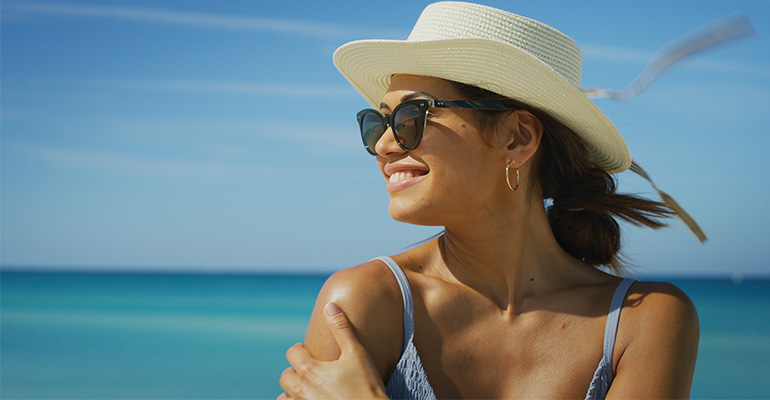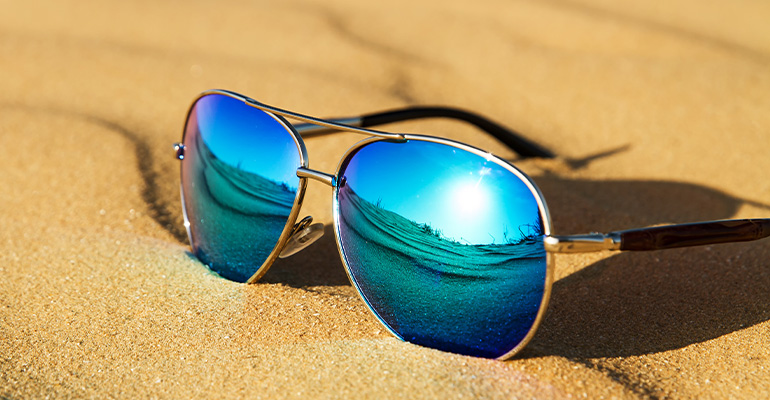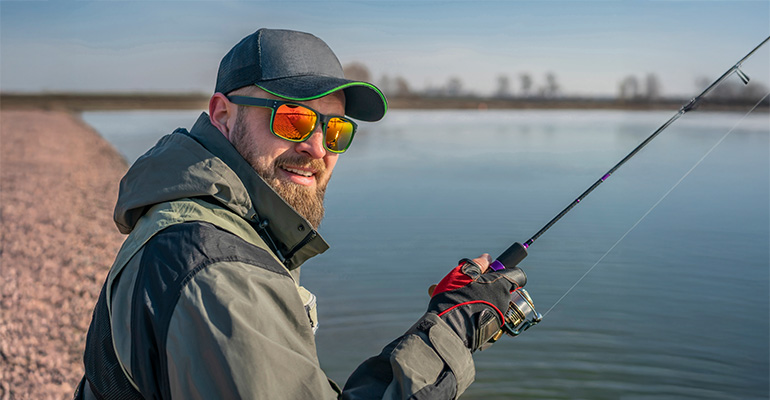Understanding Polarized Lenses Color - A Comprehensive Guide to Choosing The Right Pair
Dec 11, 2024

Have you ever seen all the different polarized sunglasses and wondered if the different colors offer any benefits?
Well, polarized lens colors matter since each specific color can help enhance your vision under certain conditions, for example, green polarized lenses help to increase contrast making them great for sports like golf.
Polarized lens colors are not the same as normal tinted lenses since they offer sun protection, you can learn more about this here.
Our guide below will discuss the technology behind polarized sunglasses, which color lens is right for you, other factors to consider, and where to shop for the best and most affordable polarized sunglasses.
What Is The Technology Behind Polarized Sunglass Lens?
The best polarized lenses are equipped with a special coating or film which helps to filter out horizontal light waves, these are the primary cause of glare.
The special filter in the polarized lens allows only vertical-orientated light to pass through, making it particularly useful for outdoor settings where there is variable light and glare from surfaces such as snow, water, and roads.
Benefits of polarized lenses include clarity, comfort, reduced eye strain, and better vision in various environments.
If you are wondering how to tell if sunglasses are polarized, our guide will help with that.

Which Polarized Lens Color Is Right For You?
Gray Polarized Lenses
Gray lenses provide the most neutral color perception, reducing brightness while maintaining true-to-life color.
Pros
Best for bright sunny days.
Excellent glare reduction.
Ideal for driving and general outdoor use.
Cons
Gives minimal contrast enhancement.
Not as effective in low-light conditions.
Brown/Amber Polarized Lenses
Brown lenses increase contrast and depth perception, which makes them ideal for varying light conditions, even low-light conditions, unlike gray-colored lenses.
Pros
Great for cloudy days or variable lighting.
Enhance contrast which is beneficial for clarity in outdoor activities.
Ideal for water sports and fishing.
Cons
Can distort true color in very bright conditions.
Green Polarized Lenses
Green lenses offer a balanced tint which helps to enhance contrast while also keeping color accuracy.
Pros
Good for a variety of outdoor activities such as golf or hiking.
Helps with clarity in bright and moderate light.
Reduces glare.
Cons
Give moderate contrast enhancement compared to brown or red lenses.

Blue Polarized Lenses
Blue lenses have a cooler tone and are commonly picked for fashion and water sports.
Pros
Provides a calming effect.
Ideal for bright sunny days near the water.
Cons
Less effective for contrast enhancement.
Not suitable for all lighting conditions.
Red/Rose Polarized Lenses
Red lenses are best for increasing contrast in low-light conditions.
Pros
Enhances depth perception in dim and overcast conditions.
Great for low-light outdoor activities.
Cons
Not as ideal for bright sunny conditions.
Yellow/Gold Polarized Lenses
Yellow lenses are designed to improve visibility in low-light conditions such as in the dusk or fog.
Pros
Great for overcast days and low-light environments.
Provides sharp contrast and clarity.
Cons
Not as suitable for bright sunlight.
Can distort colors in bright light.

Factors To Consider When Choosing Polarized Lens Colors
Activity Type - Different colors work better for specific activities. For instance, brown lenses are ideal for outdoor sports like fishing while gray lenses are great for driving since they offer natural color perception.
Lighting Conditions - For bright sunlight, you need lenses that help to reduce glare and filter out excess light such as gray or brown. For low-light conditions, yellow or red lenses work better as they enhance contrast.
Environment - If you're spending time near the water then blue or green lenses can help to reduce the glare from the reflective surface. For skiing or snowboarding, yellow or gold lenses are more suitable as they provide visibility in low-light or snowy conditions.
Personal Preference - You might prefer a certain color based on comfort or aesthetics. It’s important to choose the color which feels best for you.
Versatility - If you're looking for one pair of polarized sunglasses that will work for a variety of activities it's best to choose a versatile color like brown or green as they perform well in all variable lighting conditions.
Where To Buy The Best Value Polarized Sunglasses
At GlassesShop we offer a wide range of lens options, allowing you to choose functional lenses and customize tint colors and depth. You can create stylish yet protective sunglasses tailored to your needs. We also support options for single-vision, reading, and progressive lenses.
If you're unsure as to what style suits you best we have a try-before-you-buy-home try-on service, allowing you to order up to five pairs to try on at home as well as a virtual try-on function.
We have a BOGO, buy one get one free deal for you to enjoy so you can experience two different types of lenses as well asfree shipping over $69 and a 365-day guarantee policy on all our glasses.